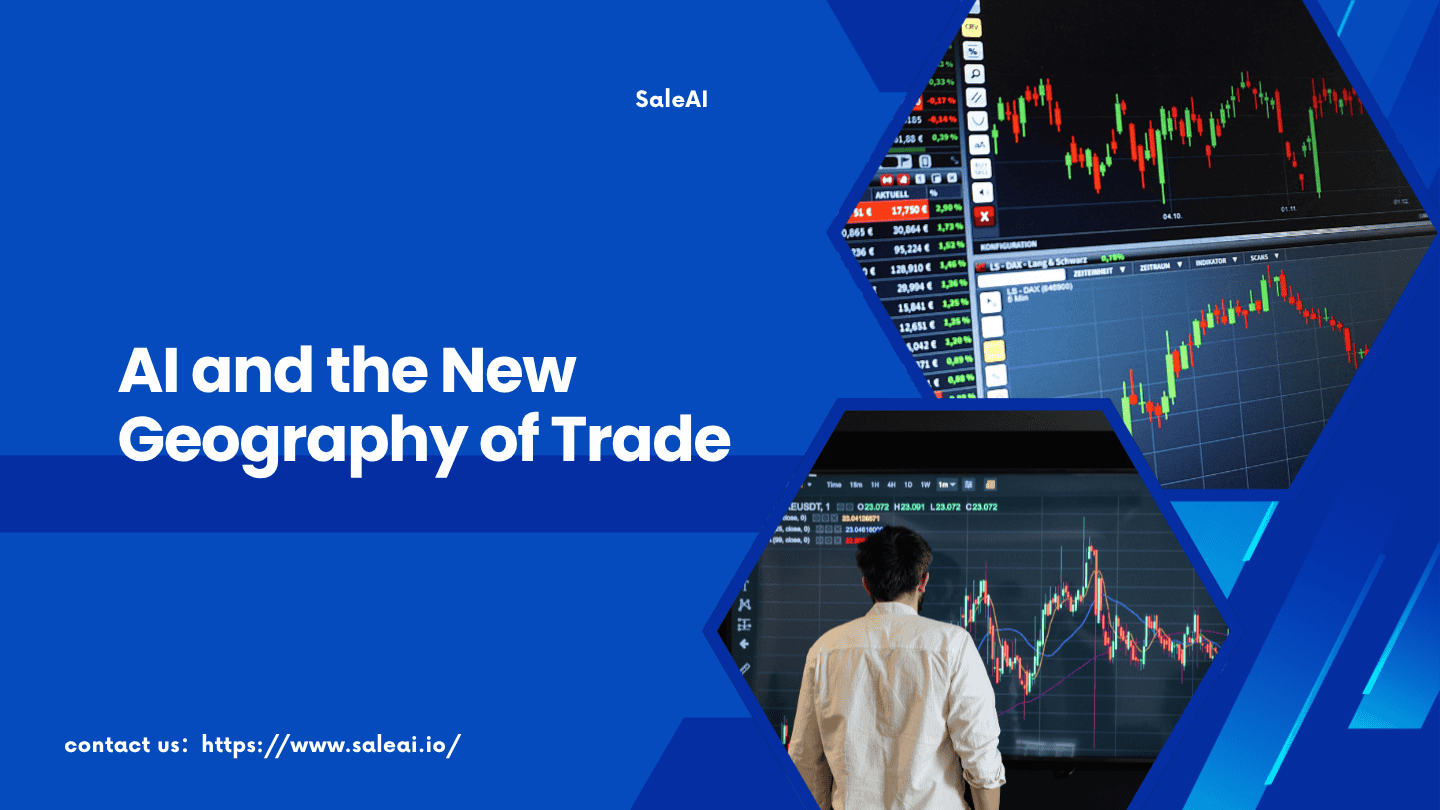
For centuries, geography defined the flow of commerce.
Ports, proximity, and logistics shaped which nations thrived.
But in the twenty-first century, that map is changing—redrawn not by borders or distance,
but by data, algorithms, and artificial intelligence.
The world’s new trade routes are digital, and AI has become a critical part of how they form.
Among the tools enabling this shift is SaleAI, a platform that helps exporters work within this emerging landscape of intelligent, data-driven trade.
1. The Decline of Physical Geography
In the industrial age, advantage came from location.
Manufacturing centers such as Germany or logistics hubs like Singapore built success on access and scale.
Today, information access matters more than infrastructure.
A small exporter in Bangkok can now compete with a corporation in Berlin—
not because of lower costs, but because intelligent systems shorten the distance between insight and action.
Through platforms such as SaleAI’s Super Agent,
exporters can identify buyers, prepare documents, and respond to opportunities without being limited by geography.
Trade is increasingly defined not by where a company operates, but by how intelligently it can operate anywhere.
2. Data as the New Infrastructure
According to the World Economic Forum, digital capability now contributes more to trade efficiency than traditional infrastructure in many emerging markets.
What once relied on ports and warehouses now depends on APIs and analytics.
Systems like LeadFinder Agent locate verified buyers across regions,
while InsightScan Agent helps assess credibility before engagement.
In this sense, data has become both the infrastructure and the language of modern commerce.
Exporters compete through interpretation and precision, not just scale.
3. The Emergence of Digital Trade Corridors
AI is creating new “digital trade corridors” —connections defined by data exchange rather than shipping routes.
These networks link suppliers, buyers, and markets in real time, reducing the traditional friction of global business.
A manufacturer in Vietnam can reach a retailer in Denmark through shared digital ecosystems,
supported by tools that translate product, intent, and compliance automatically.
Solutions such as SaleAI illustrate how digital connections replace physical distance.
Where trade once depended on ships, it now depends on signals.
4. How AI Levels the Playing Field
Historically, the advantages of trade belonged to the largest players—those with capital, data, and distribution.
AI is shifting that balance.
Research by the OECD shows that automation can reduce market-entry barriers for small exporters by as much as 60%.
Through tools such as ReportCraft Agent and MailWriter Agent,
smaller businesses can access insights and capabilities once reserved for multinationals.
In global trade, intelligence now scales faster than infrastructure.
AI is not removing competition—it’s redistributing it.
5. The New Metrics of Competitiveness
Traditional metrics—labor cost, logistics, capacity—are giving way to new indicators:
data literacy, automation readiness, and AI adoption.
A McKinsey Global Institute study found that exporters integrating AI into their workflows increase productivity by more than double.
In this context, competitiveness is no longer about who produces the most, but who can interpret change and act on it first.
SaleAI supports this shift by giving exporters faster visibility into opportunities and helping teams respond with consistent accuracy.
6. People at the Center of Intelligent Trade
As AI accelerates trade, human judgment remains essential.
Technology manages complexity; people create meaning.
Automation gives exporters time to focus on building relationships and shaping strategies,
while ensuring routine processes remain reliable.
In the SaleAI environment, AI functions less as a replacement than as a complement to human decision-making—
a quiet partner in clarity and scale.
7. Redrawing the Map
The new geography of trade is a network of intelligence flows rather than shipping lanes.
Clusters of data-literate exporters are forming new centers of gravity across borders.
As the OECD notes, digital capability is now a key component of comparative advantage.
For exporters, this means success depends less on where they are located and more on how effectively they use technology to connect.
Platforms like SaleAI represent one way this shift is taking shape—
helping businesses operate with the agility and insight that define the modern trade economy.
Conclusion: Intelligence as a New Form of Geography
Every industrial transformation redraws the world map.
The steam engine connected continents; the internet connected people;
AI connects possibility.
In this new geography, borders matter less than bandwidth,
and the distance between a question and an answer is measured in data, not miles.
For exporters, the task ahead is clear:
learn to navigate intelligence as confidently as they once navigated oceans.
👉 Start Free Trial: https://www.saleai.io/


